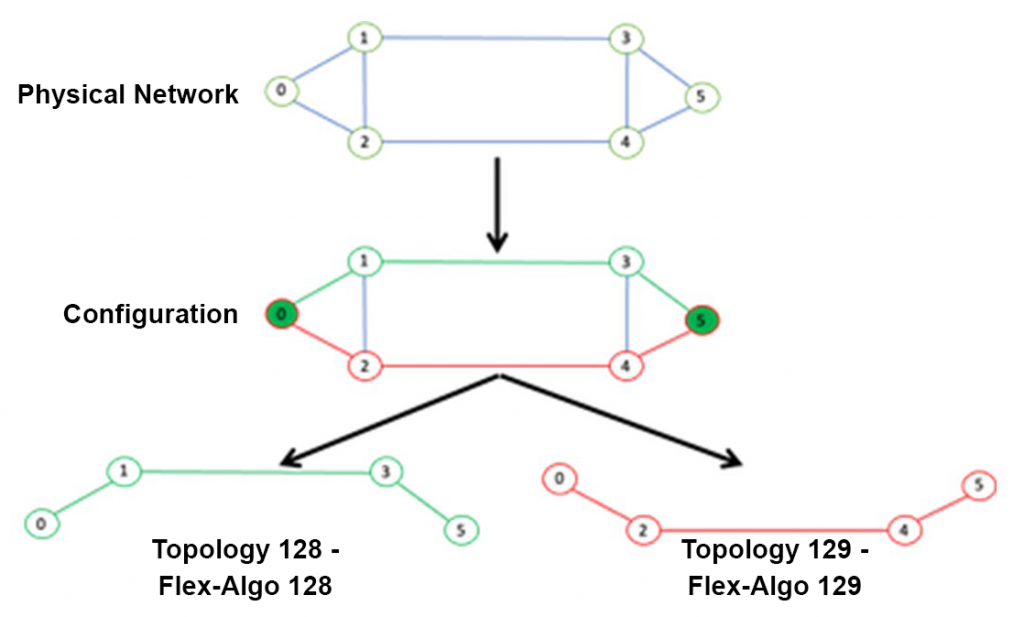|
Getting your Trinity Audio player ready...
|
Flex-algo allows adding user-defined topologies
In addition to the traditional SR algorithms 0 (shortest path first [SPF]) and 1 (constrained shortest path first [CSPF]), flex-algo allows adding user-defined topologies using the 128-255 algorithm range, effectively creating multiple network topologies on the same physical network.
Flex-algo enables these topologies to be optimized based on these metrics and inclusion/exclusion criteria:
Metric types:
- Minimize IGP-metric – optimization based on the path metric as advertised by IGP.
- TE-metric – optimization based on the TE path metric as advertised by IGP.
- Delay – path optimization based on the delay calculated on the links.
Include/Exclude:
- SRLG (shared risk link groups) – definition of distinct topologies that do not share the same resource and could not fail together.
- Link admin groups – user-controlled markings on the link offering versatile customization.
Combining SR technology with flex-algo parameters
By combining SR technology with these flex-algo parameters, the network can treat different traffic patterns and provide advanced traffic engineering (e.g., SR-TE) capabilities without requiring elaborate configuration. In a network with full SR support, flex-algo can achieve most of the advantages of SR-TE using a single label.
For example, consider a scenario where flex-algo is used to build one topology with the minimum TE metric and SRLG A (topology 128 – green) and another topology with the minimum TE metric and SRLG B (topology 129 – red) extending the network topology and catering to distinct use cases simultaneously.

Working with DriveNets Network Cloud Operation System (DNOS)
In DriveNets Network Cloud Operation System (DNOS), flex-algo has access to the MPLS routing table and the MPLS color table, allowing flex-algo to install color-related routes. Color is an attribute of BGP routes, and it can be leveraged creatively to map different types of virtual private network (VPN) routes (L3VPN, L2VPN, VPWS, EVPN) to the relevant paths in the physical network. This approach aids in achieving effective and efficient network connectivity for diverse virtual private network services. For example, a VPN for 5G, a different VPN for a business customer, and whatever else makes sense to the network operator. The sky is the limit.
The benefits of flex-algo
The benefits of flex-algo are substantial. With flex-algo, network operators can create multiple network topologies using parameters such as different metric types and inclusion/exclusion criteria. This level of customization empowers operators to tailor the network to specific traffic patterns and application requirements. Moreover, by leveraging the inherent capabilities of SR, flex-algo significantly reduces the complexity associated with path computation. This streamlined approach enables operators to achieve advanced SR-TE capabilities covering the vast majority of traffic-engineering use cases with fewer configuration efforts. With flex-algo, the complexities of network optimization are streamlined, paving the way for a more agile and responsive networking landscape.
Download
Introducing DriveNets Network Cloud




